If you are wondering how to beautify the area beneath pine trees, there are several excellent options. What is the best groundcover under pine trees? Before you rake up those fallen pine needles, check out the answer we’ve found after scouring landscaping ideas for the best ground cover under pine trees.
Add mulch beneath pine trees for an ideal ground cover. Not only is mulch aesthetically pleasing, but it also provides a healthy environment for your trees. Consider these affordable, eco-friendly types of mulch:
- Pine needles or pine straw
- Pine (or other types) bark
- Shredded hardwood
- Wood chips
Keep reading, and we’ll divulge why mulch has so many benefits when used as a ground cover.
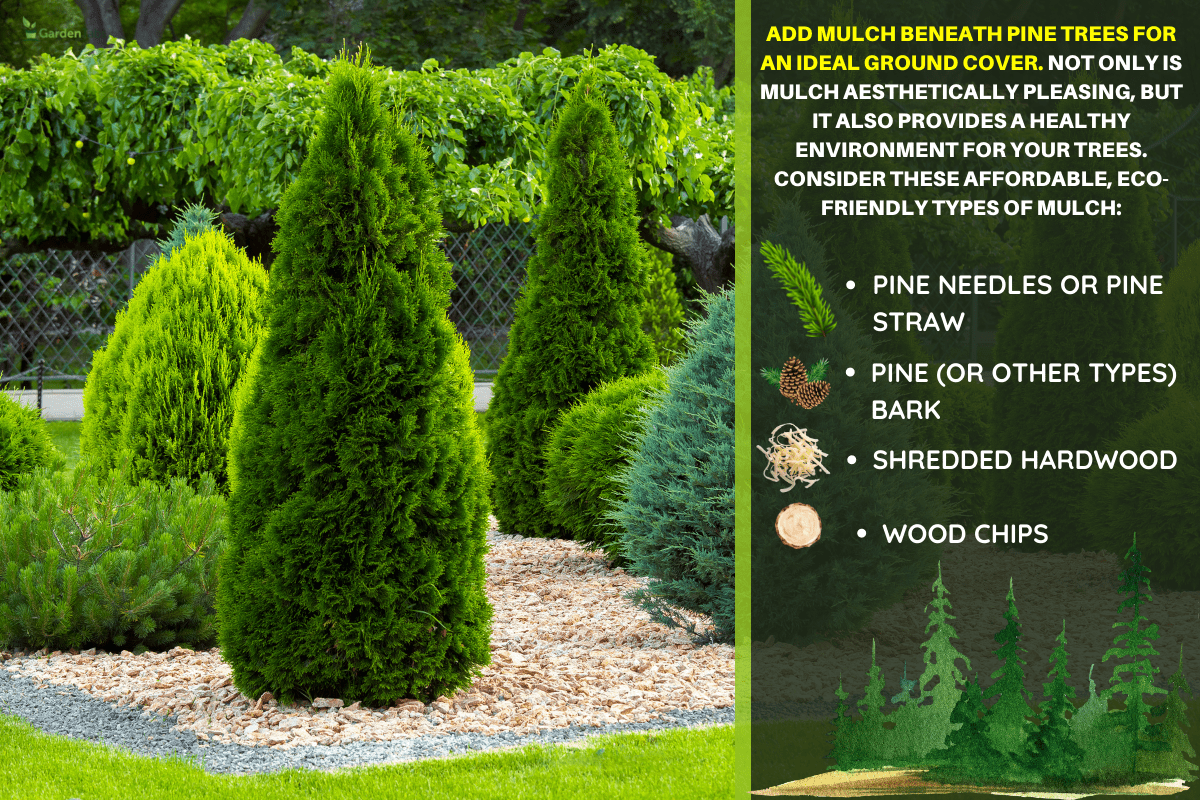
Should You Mulch Under Pine Trees?
Mulching beneath pine trees is an excellent way to create an aesthetically pleasing ground cover. There are many types of mulch or organic, permeable materials that can be used, such as grass clippings, leaves, bark, arborist wood chips, and pine needles.

For a decorative ground cover beneath pine trees, we recommend mulching with bark, wood chips, or pine needles (pine straw). All of these mulch materials are renewable resources that provide many benefits to your soil and trees and improve the overall look of your landscape.
Fortifies Soil
Comprised of biodegradable materials, mulch breaks down slowly. Decaying mulch fortifies the soil by adding nutrients.
Prevents Compacted Soil
Mulch creates a nutrient-rich layer of permeable topsoil. Soil is less prone to becoming compact or crusted, so growing roots can easily penetrate.
Retains Water
Mulch traps moisture by preventing evaporation from occurring at the topmost layer of soil. Water seeps deeply into the soil to quench thirsty tree roots.
Keep the mulch approximately 8 - 10 inches away from the base of the tree trunk, spreading it out in a donut shape around the tree. Piling mulch up against the trunk creates continual moisture that can cause problems for the tree, like fungal infections or rot.
Insulates Soil
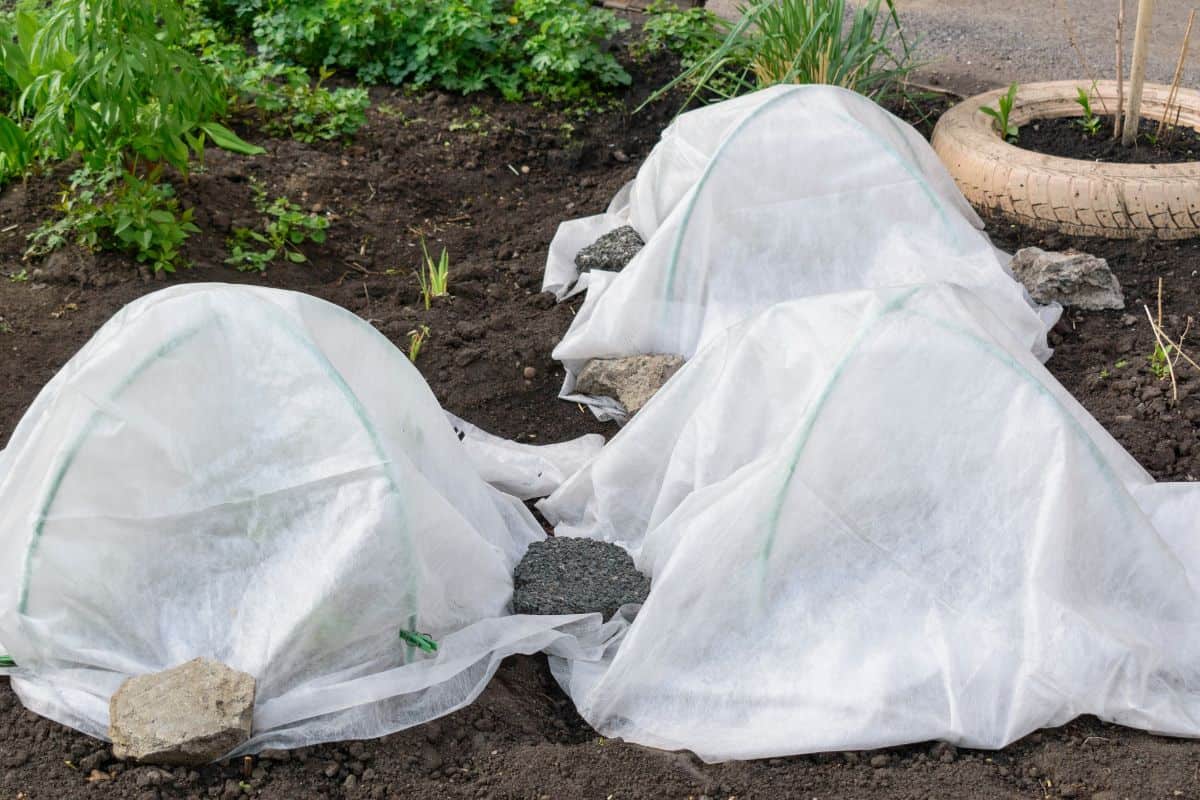
Acting as an insulating layer, mulch moderates soil temperatures to keep the soil cooler during summer and warmer during winter. Roots that are protected from extreme temperatures are less likely to die or be damaged during seasonal transitions.
Prevents Erosion
Mulch settles onto the ground to form a permeable layer atop the soil around your tree. Needles used for pine straw tend to become interwoven with one other, somewhat mat-like. This layer of mulch protects the soil from wind and water erosion. It can be particularly helpful to apply mulch on hillsides or slopes because it will prevent wash-out after heavy rains.
Reduces Disease & Infestation
Eco-friendly mulch fends your tree without the use of pesticides, herbicides, or fungicides by using the beneficial microbes in decaying material to combat pathogens and pests.
Suppresses Weeds
An application of mulch blocks the light needed for weeds to germinate. Spread mulch 4 - 6 inches deep if using wood (bark, shredded, or chips) and 3 - 4 inches deep if using pine straw.
Adds Color & Texture to the Landscape
Mulch comes in an array of colors and textures, so you can coordinate with your landscape by adding an eye-catching ground cover. Bulky wood chips and fine-textured pine needles offer a variety of colors such as brown, yellow, reddish-orange, grey, or black depending on the variety and state of decomposition.
Can You Put Mulch Over Pine Needles?
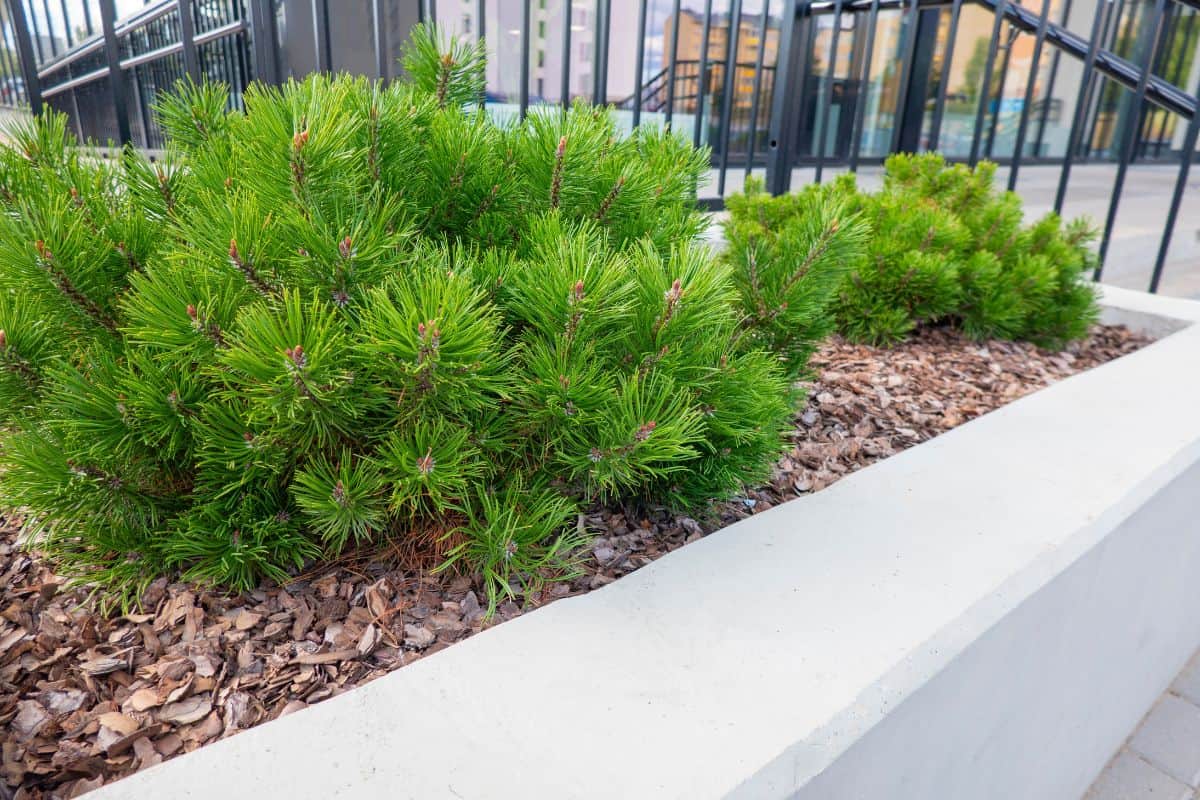
Because mulch is continually breaking down, you can simply add more the following season by putting new mulch overtop. It does not matter what type of mulch you are using; you can put wood chips over pine needles or vise versa. Any combination of mulch will provide a hardy, nutrient-rich ground cover.
Too much mulch is not healthy for your tree because it diverts water away from thirsty roots. Cover old mulch completely with 2 - 3 inches of new. Particularly if using pine straw does not create a mulch matting more than 4-inches thick.
Consider the aesthetic appeal when adding new mulch, such as how intermingling different colors or changing from one texture to another might look. If you cannot completely cover the old, you might want to either remove it or lightly turn into the topsoil to hide it from your new look.
Are Pine Needles Cheaper Than Mulch?
If you are mulching beneath a pine tree, you are in luck because the tree provides the needles, so it does not cost anything to generate pine straw. You might also gather pine straw from a neighbor or from a nearby forested area to generate a base of mulch beneath a younger tree. Typically pine needles are either free or significantly cheaper than mulch.
Click here to find pine straw on Amazon.
Should You Remove Old Pine Straw?
You do not need to remove old pine straw because the pine needles are continually decomposing and adding nutrients to the soil as they break down. You can add new pine needles atop to generate more mulch.
However, pine needles are flammable. So if they are extremely dry, especially during a drought, when it might be difficult to water beneath your trees, you might consider removing the pine straw for safety to avoid an accidental fire. Composted and coarse-textured bark or wood chip mulches are less flammable, both excellent alternatives to use in arid climates.
Do Pine Needles Attract Termites?
Pine needles do not attract termites because needles have no nutritional value. Although termites will be unable to thrive among pine needles, they might be attracted to the moist soil beneath the pine straw mulch. Do not worry because the mulch will provide a thick, protective barrier between the pests and your tree making it difficult for termites to move in.
Should You Put Rocks Under Pine Trees?
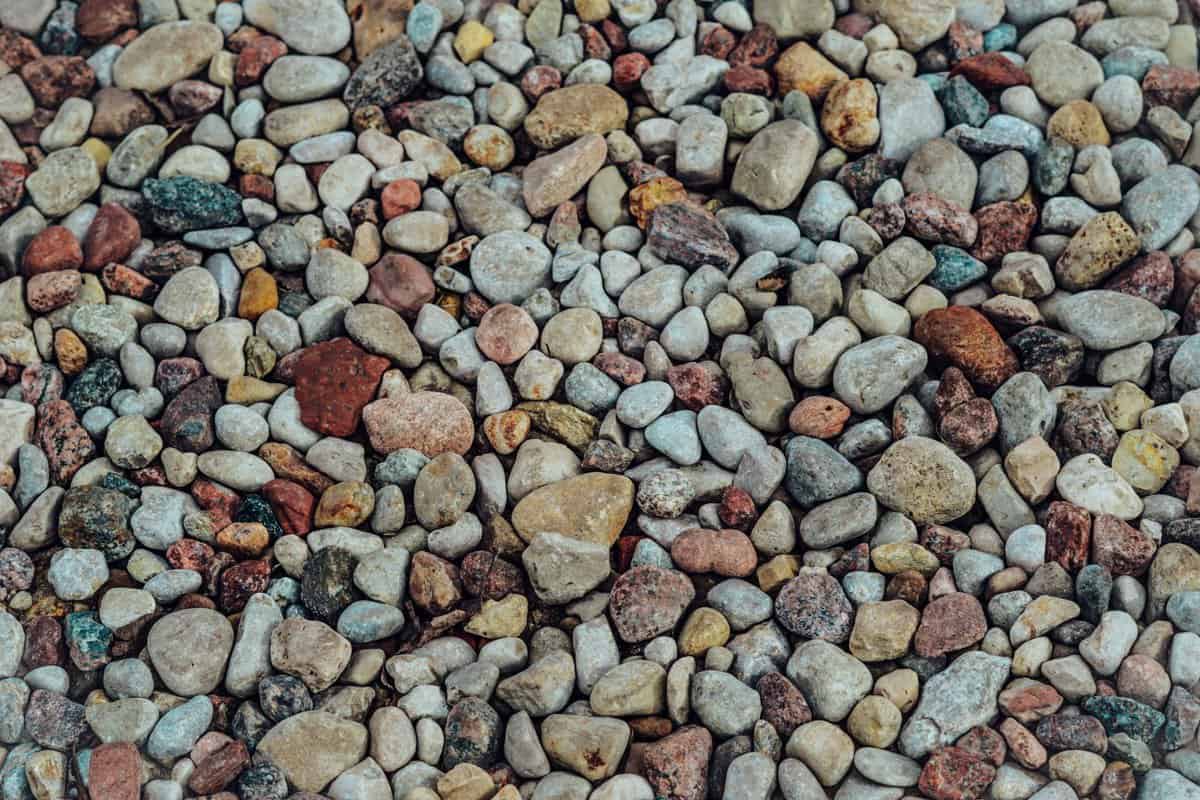
Rocks are an alternative, low cost, and low maintenance ground cover that you can use beneath pine trees. Although rocks do not add nutrients to the soil, they will prevent erosion, reduce weeds, and moderate soil temperature. Whether you use pebbles, stones, boulders, or bricks, the placement of rocks in your landscape lends aesthetically pleasing results.
Once you place rocks, they do not move, and there is no need to re-fill the area from year to year. Be mindful to leave approximately 8 - 10 inches between the rocks and the tree trunk.
Rocks will suppress weed growth for a while, but eventually, you will need to pull weeds that protrude between rocks. Laying a porous landscape fabric beneath the rock ground cover can prolong weed suppression. Do not use plastic beneath ground cover because it can hinder the tree’s ability to get nutrients and water from the soil.
Click here to find landscape fabric by ECOgardner on Amazon.
Should You Put Flowers or Vegetables Under Pine Trees?
You can use other plants as a ground cover beneath pine trees. Consider these growing conditions when selecting flowers or vegetables as ground cover under pine trees:
- Shade; dense canopies of pine trees block direct sunlight, so lighting conditions are shaded.
- Water; ground cover plants will compete with thirsty pine trees for water, so anticipate low to medium water conditions.
- Soil pH; pine trees tend to lower the pH of the soil in which they grow so that ground cover plants will be planted in acidic soil.
Before you select ground cover plants, be sure to read our blog, “What to Plant Under Pine Trees?” for everything you need to know about planting beneath pine trees. We’ve got some great plant suggestions for you!
Now that you know about mulch to care for your trees, check out our blog, “15+ Pine Tree Landscaping Ideas,” to get some great ideas about where to locate evergreens in your landscape.
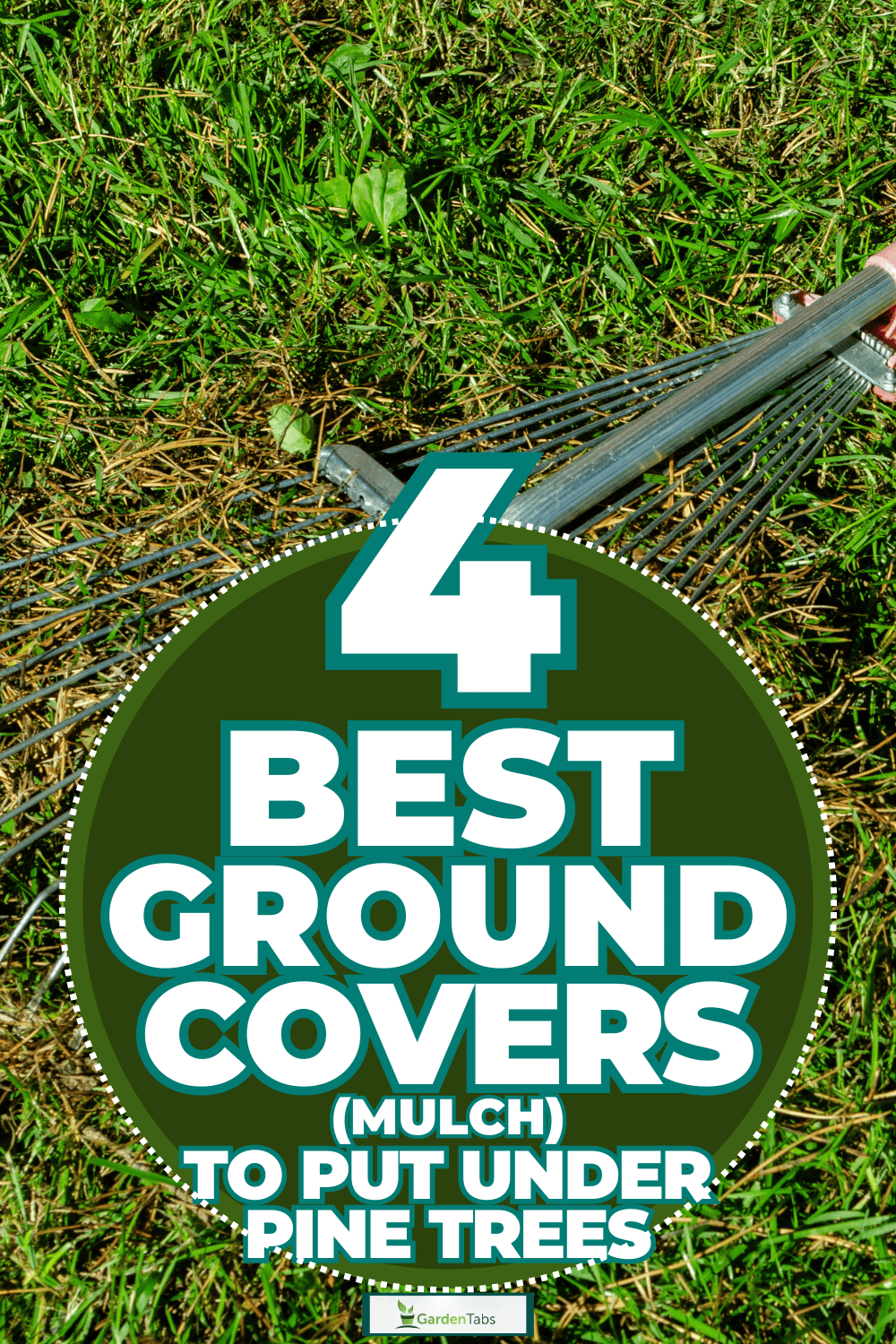



I have grass under my pine trees . Do I have to rake the grass up before applying wood chips ?
Yes, and get more ideas from this article: https://gardentabs.com/how-to-garden-with-mulch/